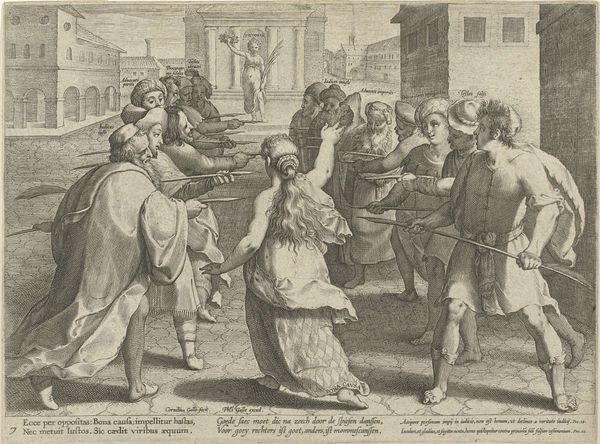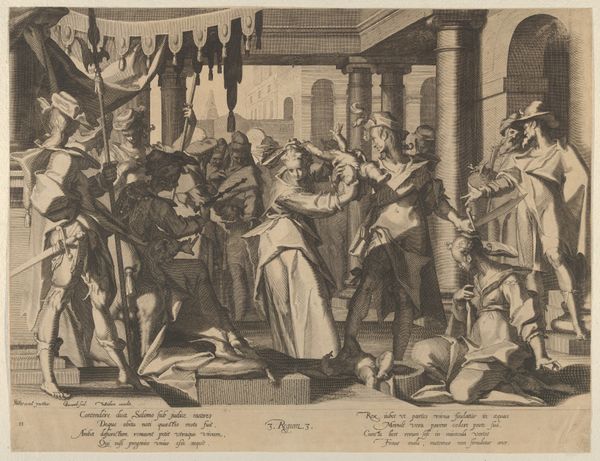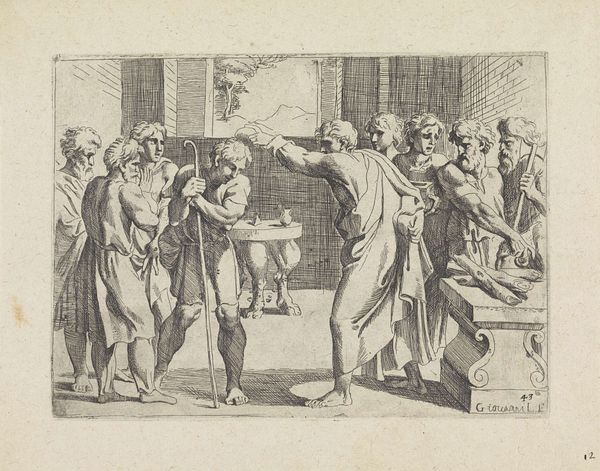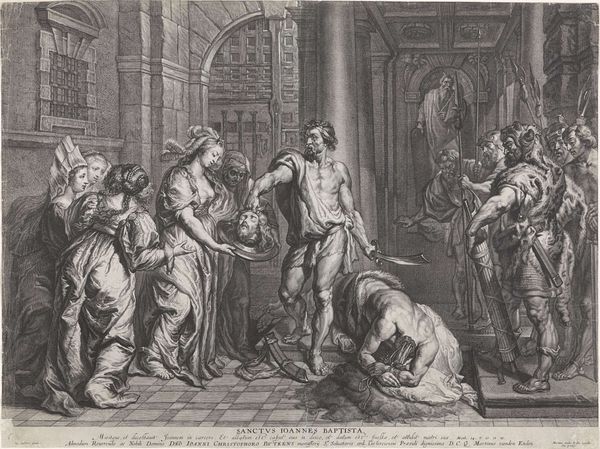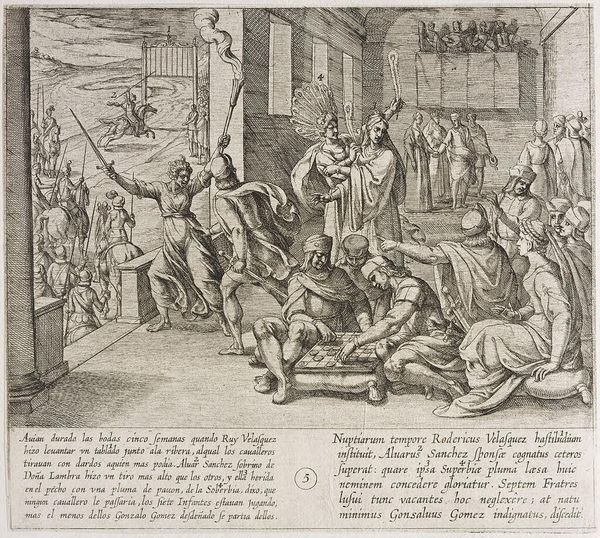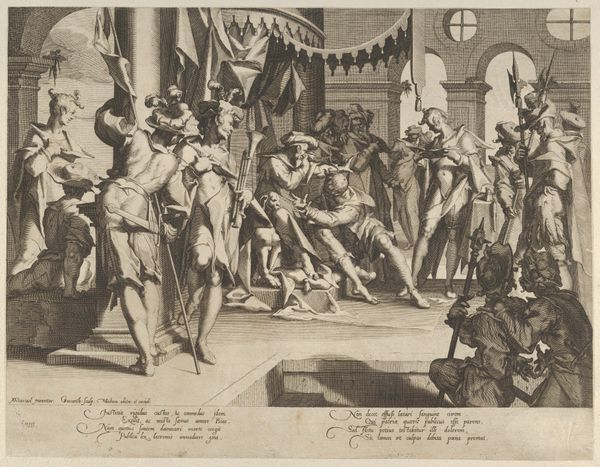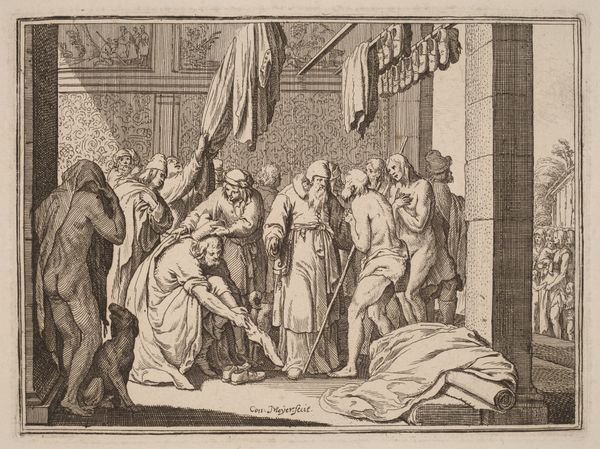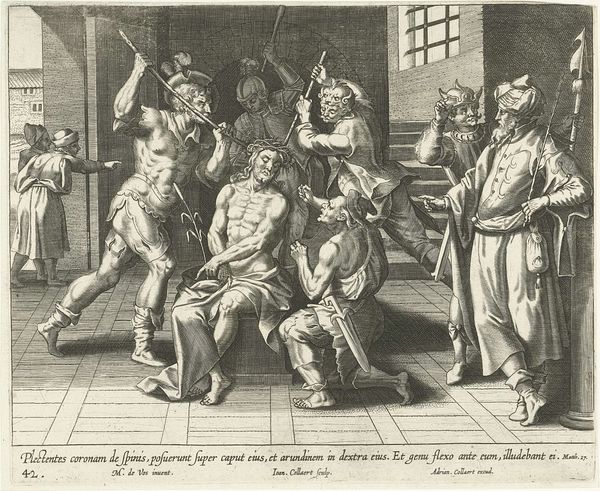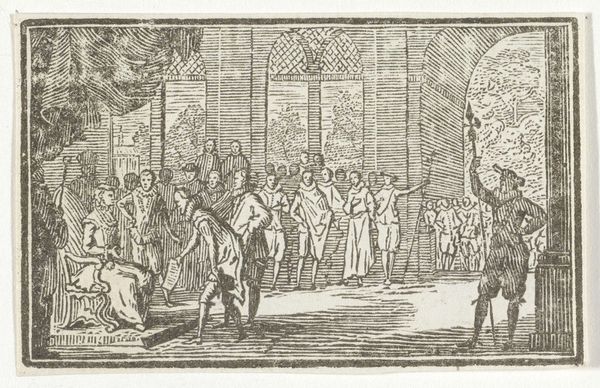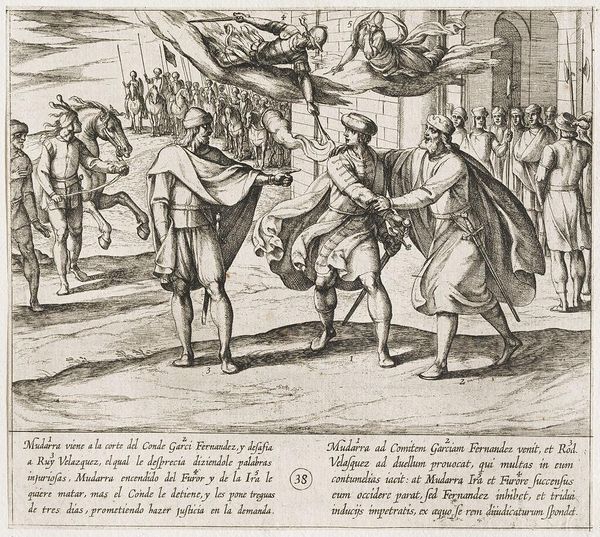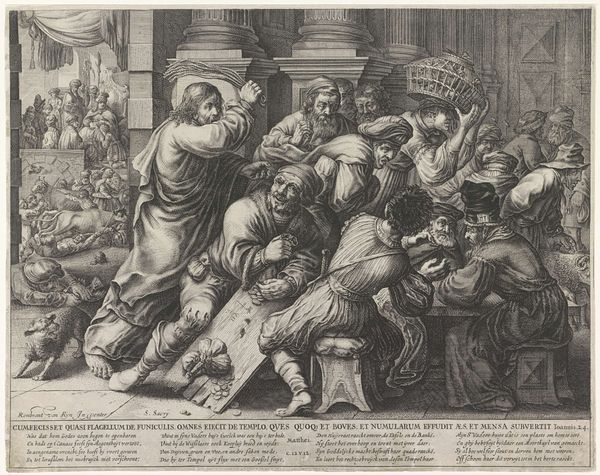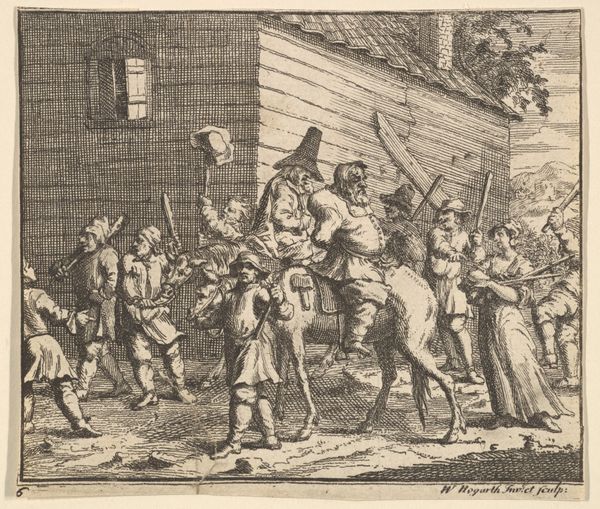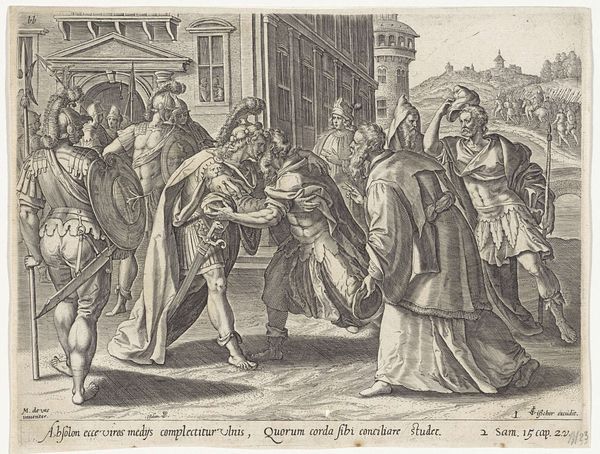
print, engraving
#
baroque
# print
#
figuration
#
history-painting
#
engraving
Dimensions: height 112 mm, width 156 mm
Copyright: Rijks Museum: Open Domain
Curator: Standing before us is "Geseling," or "The Flagellation," an engraving created between 1602 and 1604 by Raffaello Schiaminossi, a work that's currently held at the Rijksmuseum. My first thought? Brutal. Editor: It absolutely is, and so very Baroque. The sheer violence of it all! Look at the figures, their strained musculature, the torturers' cruel focus, the implied cries of agony—Schiaminossi leaves nothing to the imagination. It's a scene ripped from the gospels and made hyperreal, disturbingly so. This moment carries an enormous weight, doesn't it? I see it in its composition. The foreground, the way they dominate space and our attention… what do you feel? Curator: I find my eyes drawn upwards and into the work; it's unnerving, a sense of detached judgement. From an artistic point of view, I'm intrigued by how Schiaminossi conveys a complex narrative through incredibly detailed lines, creating an intense scene. But the emotional weight of it…it lingers, a haunting exploration of human suffering and, maybe more to the point, the abuse of power that religious themes often carried. It almost has to ask, "Who bears responsibility"? Editor: Precisely! Consider how this scene functions within its historical context, in a time rife with religious and political upheaval, these images were anything but neutral; rather tools wielding influence and shaping beliefs. How fascinating! The power of a story lies not only in its telling, but also its circulation and who gets to control the narrative. An engraving like this makes that struggle viscerally real, even centuries later. The line between witness, participant, and powerless subject blurs. I find the ambiguity troubling. Curator: In his masterful display of the human condition in excruciating pain and suffering; one can’t help but think of personal experience when one considers this Baroque portrayal, a perspective offered as more and more contemporary art aims to capture the human condition of our day. I think it will remain relevant for centuries to come, this snapshot into violence and its roots in judgement and condemnation. Editor: It speaks volumes about art’s role not only as witness, but as active participant in shaping historical narratives and reflecting cultural fears, and indeed hopes! Art calls us to accountability. And to hope that this suffering changes the status quo for future generations.
Comments
No comments
Be the first to comment and join the conversation on the ultimate creative platform.
